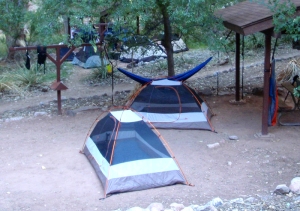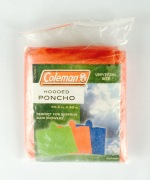“Gear is too expensive”- one of the most common concerns about backpacking. Top-brand gear is undeniably expensive. Building a supply of high-quality gear that suits your needs can take many years and cost thousands of dollars. But if you, like most people, only go backpacking once or twice per season, spending thousands on gear is ridiculous.
Why is gear so friggin’ expensive?!
Quality, durability, performance, design, and brand. For a thru-hiker, climber, or high-altitude alpinist, the reliability of your gear may be a matter of life and death, literally. If your life depend on the quality of your gear, price becomes unimportant. You’d gladly pay $500 for a rain jacket if you knew it was going literally save your life. Sure there are less expensive alternatives, but if you’re traveling to remote, harsh environments for extended periods of time, why risk hypothermia, or worse, because of a torn or leaking rain jacket? Instead, by selecting proven high-quality gear, made for harsh conditions, you presumably minimizing the risk of something going terribly wrong due to gear-failure.
Alternatives
But if you only go backpacking once or twice per season in a nearby StatePark, spending thousands on gear is ridiculous. Or, if you’re new to backpacking and started having second thoughts after your first visit to REI – DON’T WORRY – backpacking doesn’t have to cost a fortune. As a matter of fact, unless you’re an experienced outdoorsman or adventurer, you probably wouldn’t notice much difference between professional high-quality gear and significantly less expensive alternatives.
Let’s take a look at some examples and key items:

2- Person 3-season Tent
- Pro-grade: Big Agnes Fly Creek 2 (1 lb. 15 oz.), $550.00
- Alternative: Kelty Salida 2 (4 lbs. 9 oz.), $150.00
My Kelty Salida 2 is going on 3 years and has been through countless storms, downpours, and snow. The tent has performed excellent in all conditions, from the Grand Canyon to the snowy mountains of northern Sweden, and it is still in excellent condition.
Sleeping Pad
- Pro-grade: Therm-a-Rest NeoAir XLite (2.5” thick inflatable pad, 120z.), $160
- Alternative: Therm-a-Rest Z Lite Sol Sleeping Pad (0.75” thick closed-cell foam, 10oz.), $35
The inflatable, more expensive pad is obviously going to be more comfortable, because it is thicker. And it packs down smaller. But if you are only using the pad a handful of nights every season, is it worth spending the extra $125?
Sleeping Bag
- Pro-grade: Mountain Hardwear Phantom 45 Sleeping Bag (Q.Shield 800-fill, 45°F, 1 lb. 4 oz.), $330
- Alternative: REI Travel Down Sleeping Bag (600-fill-power duck down, 45°F, 1 lb. 13 oz.), $140
The Mountain Hardware bag features water resistant Q.Shield filling. That’s cool. However, with a little common sense and preparation (packing your sleeping bag in a waterproof stuff-sack or plastic bag), and assuming your tent is waterproof, the risk of your sleeping bag getting wet is practically zero. In my backpacking career I’ve only dealt with a wet bag once, due to an extremely stupid mistake (pitched my tent in a rock-basin and it rained overnight, flooded my tent with 6 inches of standing water).
In warmer temperatures you may be able to skip the sleeping bag completely. If night temperatures are expected to remain above 70, consider brining a light fleece blanket, or any packable blanket you have.
Backpack
- Pro-grade: Arc’teryx Altra 65 Pack (65L, 45°F, 5 lbs. 1 oz.), $450
- Alternative: Coleman Chinkapin X 65 Backpack (65L, 4lbs. 2 oz.) $130
Backpacks are similar to hiking boots; good fit is everything. The pros may even tell you to shop wearing a blindfold, because cosmetics and price don’t matter. The Arc’teryx bag features more adjustment options, and durability is undoubtedly superior. But for a 5-night State Park backpacking trip, the Coleman bag would be more than sufficient, assuming the fit is good.

Stove
- Pro-grade: Jetboil Flash Cooking System (including 1 Liter cooking cup, wind resistant burner, 15.25 ounces), $100
- Alternative: Primus Yellowstone Classic Trail Stove (8 ounces) $20
Jetboil makes great quality products, no doubt. They are expensive, but you get what you pay for; a reliable stove capable of quickly boiling water under harsh conditions. Or you could go with the Primus Yellowstone Classic Trail Stove and use a large rock and a backpack to block the wind.

Cooking Set
- Pro-grade: GSI Outdoors Pinnacle Backpacker Cookset (aluminum, 1 lb. 12.8 oz.) $90
- Alternative: Open Country Backpacker 2-Person Mess Kit (aluminum, 1 lb. 4 oz.) $30
The GSI set comes with insulated mugs and a Teflon coated pans. And it looks cool. The Open Country pans aren’t coated, and therefore requires pre-heating and oil for cooking. The Open Country set was my first backpacking cooking set. It worked well for most foods, but I was never able to cook milk-based soups without burning it. I used it for 2 seasons, then upgraded to a titanium set with Teflon coating.

Rain Jacket
- Pro-grade: Arc’teryx Beta LT Hybrid Jacket (GORE-TEX, 13.4 ounces), $450
- Alternative: Vinyl Rain Poncho (9 oz.) $5
If you are planning a winter thru-hike of the Pacific Crest Trail, go with the Arc’teryx jacket. If you’re spending a summer weekend in a State Park, the poncho will more than likely meet your needs. Enough said.
Boots
Good fit is everything. There is no cutting corners in this department, sorry. Go with the best fitting boots, regardless of price. A less-than-perfect-fitting pair of boots will quickly result in blisters, pain, taped feet – or worse; you may have to abort the trip.
Summary
The pro-quality gear listed above adds up to: $2,130. The less expensive alternatives add up to: $590. Unless you are going to remote areas for extended periods of time, where conditions are harsh and help is days away in case of an emergency, you probably don’t need the pro-grade gear. If you are new to backpacking, don’t let price tags scare you away. The less expensive alternatives will allow you to get started with backpacking without breaking the bank. Over time you may find that you want to upgrade certain items. That’s great, and by then it’s probably money well-spent, because you will have a much better idea of what works for you and what your preferences are.
Share your stories! What’s your trick to saving money on gear? Did we get it all wrong? Leave a comment below or send us an email!
